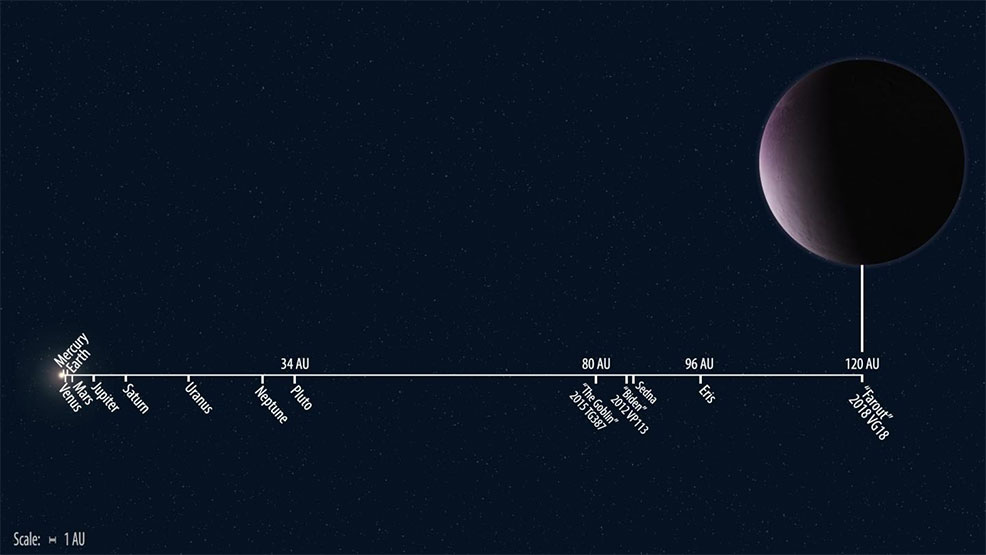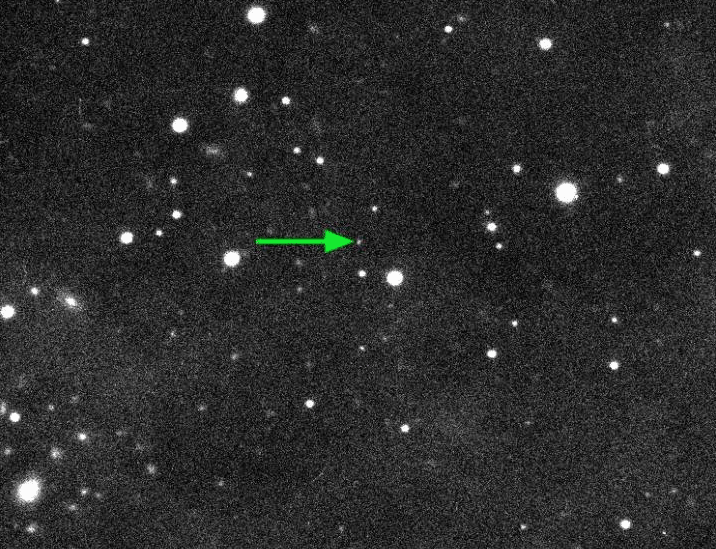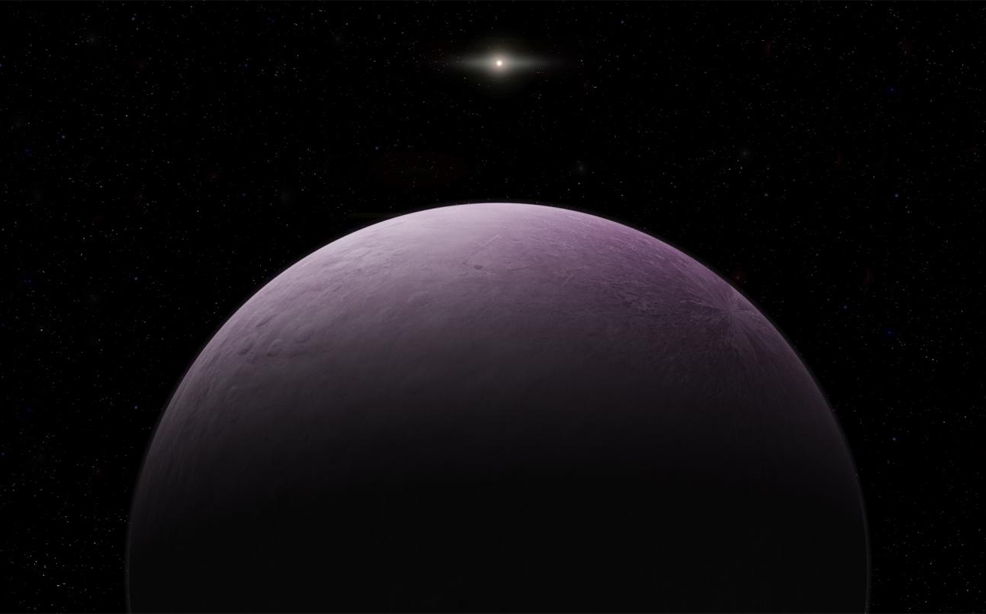
20th December 2018 Newly found object is the most distant known in our Solar System Astronomers led by Scott Sheppard have announced the discovery of 2018 VG18 – nicknamed "Farout" – the most distant body ever observed in the Solar System at approximately 120 AU.
The International Astronomical Union's Minor Planet Center has officially confirmed the first known Solar System object to be detected at a distance of greater than 100 astronomical units (AU), or a hundred times farther than Earth is from the Sun. The finding was made by Scott Sheppard from the Carnegie Institution for Science, David Tholen from the University of Hawaii and Chad Trujillo from Northern Arizona University. As shown on the diagram above, the second most distant object seen in our Solar System is Eris, at 96 AU, while Pluto is currently 34 AU away. This makes the new object – designated 2018 VG18 – over three-and-a-half times more distant than the Solar System's most-famous dwarf planet. The discovery was part of the team's ongoing search for extremely distant Solar System objects, including the suspected Planet X, which is sometimes also called Planet 9. In October, the same group of researchers announced the discovery of another object, called 2015 TG387 and nicknamed "The Goblin" because it was first seen near Halloween. The Goblin was discovered at about 80 AU and has an orbit that is consistent with it being influenced by an unseen Super-Earth-sized body on the Solar System's very distant fringes. "2018 VG18 is much more distant and slower moving than any other observed Solar System object, so it will take a few years to fully determine its orbit," explained Sheppard. "But it was found in a similar location on the sky to the other known extreme Solar System objects, suggesting it might have the same type of orbit that most of them do. The orbital similarities shown by many of the known small, distant Solar System bodies were the catalyst for our original assertion that there is a distant, massive planet at several hundred AU shepherding these smaller objects."
2018 VG18 is thought to be around 500 km in diameter, likely making it spherical in shape and a dwarf planet. It has a pinkish hue, a colour generally associated with ice-rich objects. Its highly eccentric orbit (click and drag to move around) is currently estimated at 929 years. For comparison, Pluto takes 248 years to go around the Sun. "This discovery is truly an international achievement in research using telescopes located in Hawaii and Chile, operated by Japan, as well as by a consortium of research institutions and universities in the United States," said Trujillo. "With new wide-field digital cameras on some of the world's largest telescopes, we are finally exploring our Solar System's fringes, far beyond Pluto." In related news, the New Horizons spacecraft – which obtained the first close-range images of Pluto in 2015 – is now preparing to encounter a Kuiper belt object known as Ultima Thule; a flyby that is scheduled to occur on 1st January 2019. The NASA probe will continue to study this remote region of icy debris until 2021.
Comments »
If you enjoyed this article, please consider sharing it:
|









